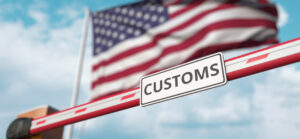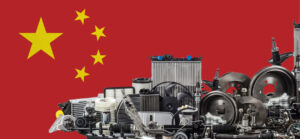An Overview of Trade Remedies
The United States, like many of its trading partners, has established procedures by which additional duties can be imposed on imports that are “unfairly” traded and cause “material injury” to the competing domestic industry.
Antidumping
The most commonly used of these trade remedies is called antidumping. Simply put, “dumping” occurs when imported merchandise is sold in the United States at a lower price than in its home market. In most cases, the U.S. Department of Commerce compares the price of the first sale to an unrelated customer in the U.S. with the price of the first unrelated sale in the exporter’s home market. Both prices are adjusted to make them comparable on an “ex-factory” basis.
However, for countries that the U.S. treats as non-market economies, such as China, Commerce does not use the actual home market price. Instead, it constructs a “normal value” based on the cost of production, using prices from a comparable market economy to value the inputs (like labor, materials, and energy). The “dumping margin” is the difference between this normal value and the U.S. price. If dumping is found, antidumping duties are imposed equal to that margin.
Countervailing
Another remedy involves imposition of countervailing duties on merchandise that has benefited from government subsidies. The amount of the subsidies is expressed as a percentage of the value of the merchandise benefiting from them, with additional duties imposed to offset them
Before antidumping or countervailing duties may be imposed, the United States International Trade Commission (USITC) must determine that the imports are causing, or threatening to cause, “material injury” to a competing domestic industry. This determination requires the USITC to analyze such factors as import volume and percentage, price undercutting and the profitability of the domestic industry.
Retroactive Duties
If both the Commerce Department and USITC make affirmative determinations, an antidumping duty order or countervailing duty order will be imposed and additional duties collected on imports covered by the order. U.S. law permits the Commerce Department to review the extent of dumping or subsidization annually, and change the rates of antidumping or countervailing duties with retroactive effect. This means that an importer may get an additional duty bill (or a duty refund) long after having entered merchandise. Whether the antidumping or countervailing duty order remains necessary is reconsidered every five years by both agencies, in “sunset reviews.”
“Scope Creep”
One chronic issue with antidumping and countervailing duty orders is whether particular merchandise is described within their scope. It’s often the case that orders are written with generalized language that may not specifically describe an imported item. In such cases, the Commerce Department has authority to determine the item’s coverage. Importers that fail to consider whether their products may be covered can face an unpleasant surprise if U.S. Customs and Border Protection (CBP), the agency enforcing orders at the time of importation, concludes that they are.
Another recurring issue is identifying the exporter of merchandise for purposes of identifying the applicable duty rate. This is particularly important in antidumping cases, where the party identified as the seller in CBP entry documents may not qualify as the exporter for duty assessment purposes. The rules for this determination are arcane, subject to interpretation by both the Commerce Department and CBP and differ when Chinese merchandise is involved rather than goods from a “market economy” country.
Legal Assistance with Trade Remedies
I have lengthy experience assisting domestic producers, importers and foreign exporters in antidumping and countervailing duty cases, covering the full range of practice in this area. I have filed petitions on behalf of domestic producers facing injurious import competition as well as represented importers and exporters defending themselves against charges that their goods are dumped or subsidized and cause material injury. In addition, I have participated in numerous judicial appeals following agency action. My experience includes five years at the USITC’s Office of General Counsel, where I provided advice in dozens of antidumping and countervailing duty investigations and was counsel of record in numerous appeals.
A significant part of my practice involves assisting domestic producers, importers and exporters with advice regarding scope coverage, representation in related proceedings before the Commerce Department and liaising with CBP to ensure proper enforcement of orders. I also assist importers in properly identifying the foreign party whose margin of dumping or countervailing duty rate will apply to their entries and establishing procedures to ensure that they meet Commerce Department and CBP requirements.
If you need guidance on trade remedies, contact me using the form below or call my office at 202-772-2039.
Why Dumping Margins Seem So High in Cases Involving China
A common misconception about antidumping law is that the U.S. compares what something sells for in America to what it sells for in the exporting country. That’s often true — unless the country is considered a non-market economy, like China.
In those cases, the U.S. doesn’t rely on Chinese prices, which are often distorted by state influence. Instead, it uses a surrogate country — usually a market economy with a similar level of development — to estimate what the cost of production would be in a market setting. This includes prices for raw materials, labor, energy, and overhead.
The result? The U.S. is comparing a constructed “fair value” based on surrogate prices (say, from India or Mexico) to the actual price charged in the U.S. If the actual selling price is lower, it’s considered dumping — even if the Chinese producer is just more efficient.
This surrogate method is legal under U.S. and WTO rules, but it helps explain why dumping margins in Chinese cases are often steep — and why the numbers may not match public expectations.
Not Everything from China Is Tariffed to Death
It’s a common assumption that all imports from China are buried under sky-high tariffs or antidumping duties. But that’s not the full picture.
Many everyday consumer products — from toys and kitchenware to LED lights and storage bins — still come in with little to no penalty. In some cases, duties exist but are modest enough to be absorbed by large retailers or offset through pricing.
Retail giants like Walmart and Amazon continue to source heavily from China. They often negotiate directly with suppliers, charter ships, and reclassify products to reduce exposure. The bottom line: plenty of Chinese-origin goods are still competitive in the U.S. market, especially when high volume and supply chain flexibility come into play.





